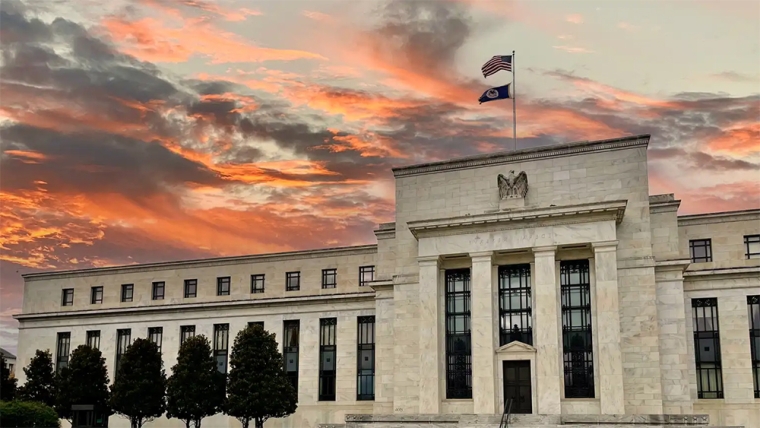
The global economy this year is full of puzzling surprises. Japan’s GDP growth is currently surpassing that of China, and July retail sales in the United States were double the consensus forecast, despite the US Federal Reserve pursuing one of the most concentrated rate-hiking cycles in decades.
In the United Kingdom, wage growth has risen to an annualised rate of 7.8% and core inflation has remained high, even after 14 consecutive rate hikes by the Bank of England (with more to come). Meanwhile, Brazil and Chile have both cut interest rates, diverging from market expectations that the Fed will keep rates high for a prolonged period.
These oddities are just a few of many, and adding to the complexity are the uncertain implications of significant structural shifts on the horizon. These include the necessary transition to zero-carbon energy, the artificial-intelligence revolution, and various other innovation-driven changes. Add in geopolitical tensions and the retreat from economic and financial globalisation, and a wide range of potential scenarios opens up.
With so many moving pieces, and under such unconventional (and in many cases unprecedented) conditions, navigating this landscape would be challenging for anyone. That is when I find it particularly useful to return to a simple analytical framework that I learned early in my career as an economist. It is an extreme version of a “reduced-form equation” that economists use to focus on just a handful of key factors for predicting outcomes. These factors may not fully explain a phenomenon, but this strategy is better than relying on an impractically large and unwieldy set of factors.
In today’s context, my analytical approach poses a simple question: What single piece of information would be most valuable if I were stranded on a desert island for six months and wanted to understand what had happened to the global economy during that time? Given the current state of affairs, I would primarily want to know how the US had managed its growth-inflation dynamics. Or, more to the point, I would want to know whether the Fed had achieved a “soft landing” (bringing inflation back down toward its target without causing a sharp increase in unemployment).
This information is crucial, because the global economy currently lacks alternative engines. After all, the growth challenges facing China, the UK, and the eurozone are not susceptible to quick policy fixes; a still-levered international financial system with high debt levels can ill afford another surge in US interest rates and strong dollar appreciation; Japan has yet to figure out how to exit its “yield-curve control” policy in a smooth manner; and the global economy continues to suffer gradual fragmentation.
At first glance, the prospects for the Fed achieving a soft landing do appear promising. Inflation has receded from its peak of over 9% last year to slightly above 3%, bringing it much closer to the 2% target. At the same time, household spending continues to drive economic growth, and corporate balance sheets are solid. These conditions suggest that the US economy can absorb the cumulative impact of the Fed hiking rates by five percentage points, while also sidestepping the effects of faltering Chinese growth and Europe’s on-and-off flirtation with recession.
But, as the economic historian Niall Ferguson recently pointed out, “managing monetary policy is not in the least like flying a plane.” This simile seems especially applicable to the current Fed, for several reasons.
First, the Fed’s operating manual is outdated. Its “new monetary framework” is, in fact, suited for the prior decade of insufficient aggregate demand, rather than to this decade of insufficient aggregate supply. Second, the Fed’s landing zone is questionable, because the inflation target it is pursuing may well be too low given current structural and secular realities.
Third, with its excessive focus on immediate conditions, the Fed could end up neglecting the future wind patterns that it will encounter as its altitude changes. Fourth, it initiated its landing sequence late, following a long period in which it had mischaracterised inflation as “transitory” before finally implementing an intense cycle of rate hikes. And, finally, it is not clear whether the Fed has learned enough from its forecasting and communication mistakes to make the necessary course corrections.
Yes, the US economy has defied skeptics by maintaining robust growth above that of other major economies, and despite its notably higher interest rates and significant external headwinds. But the continuation of this exceptional performance hinges on the Fed’s ability to establish a low and stable inflation rate without triggering a recession. This is a delicate balancing act, and whatever happens will significantly influence the rest of the global economy and how policymakers navigate today’s extraordinary uncertainty.
My hope is that six months from now, we will celebrate the Fed’s success in achieving a soft landing and in positioning the US and the global economy to manage the exciting, but challenging, secular and strategic transitions ahead. My fear, however, is that the process will be much more complicated than many economic and market analysts expect, casting a once-avoidable shadow over one of the few bright spots in the global economy.
Mohamed A. El-Erian, President of Queens’ College at the University of Cambridge, is a professor at the Wharton School of the University of Pennsylvania and the author of The Only Game in Town: Central Banks, Instability, and Avoiding the Next Collapse (Random House, 2016). Copyright: Project Syndicate, 2023, published here with permission.
7 Comments
A great article - there is so much going on at the moment. Focusing on fewer metrics helps reduce anxiety too.
I do wonder if the US has a soft landing, will that save us? Could this be the worst if it?
The Party Hasn't Even Started !
We've got a whole set of different issues, bought about by this woefully inept government. There will be a lot of pain unwinding this.
There is a reason Labour's support in Wellington is so high. They can see what us coming for bloated government department and associated grifters. Few of them will adapt to driving scrapers on upper NI roading projects, and the wailing and gnashing of teeth will be immense.
Yes o/seas buyers of our homes, more roads especially were no more room is left will fix all our issues. And ont forget Men please shop once a month..the country needs you.
Yes o/seas buyers of our homes, more roads especially were no more room is left will fix all our issues. And ont forget Men please grocery shop once a month..the country needs you.
The problem is that the "Pain" will be dished out very unevenly. A few people are going to get wrecked over the next few months but many will actually benefit from what is to come.
The entire increase in the central bank balance sheets of the U.S., EU, UK, and Japan is just the monetization of interest payments. They're just debasing the currency to pay the interest. With money printing, they're going to have the interest rates down fast. If the trend of GDP growth is 1.75%, then inflation has to be down at that level at a similar level as debt is 100%+ of GDP - all GDP growth is being allocated to debt servicing.
The world doesn't function with rates at 1.5-2%. Basically they have to refi at <=1.5%. They have to kill inflation expectations. Powell needs headline inflation to go negative to be able to cut rates.

We welcome your comments below. If you are not already registered, please register to comment.
Remember we welcome robust, respectful and insightful debate. We don't welcome abusive or defamatory comments and will de-register those repeatedly making such comments. Our current comment policy is here.